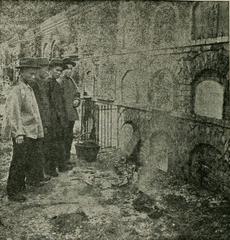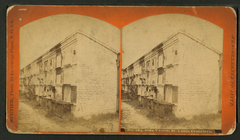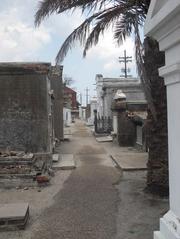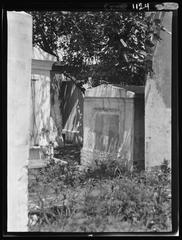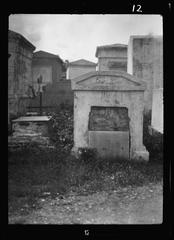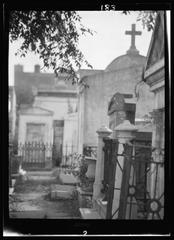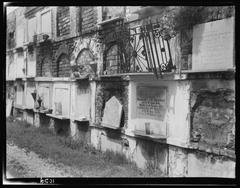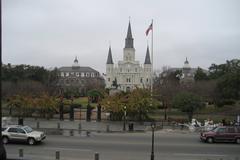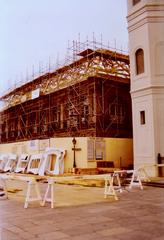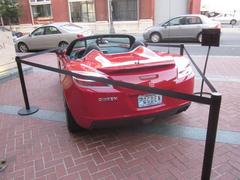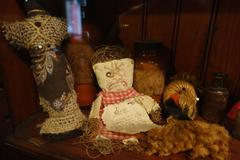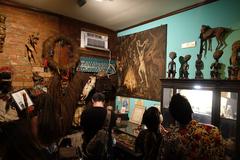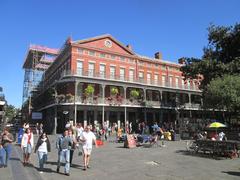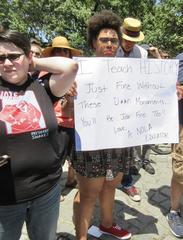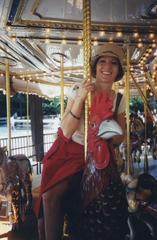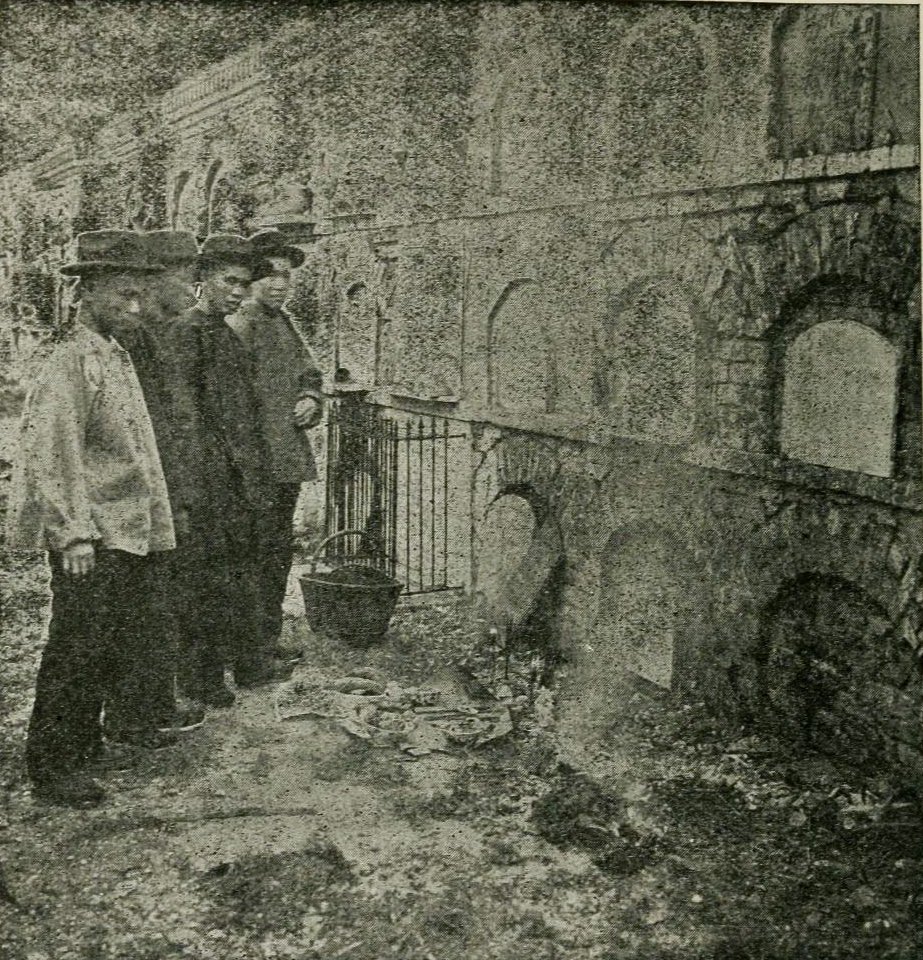
Saint Louis Cemetery Number One: Visitor’s Guide, Tickets, and Hours
Date: 20/07/2024
Introduction
Saint Louis Cemetery Number One, established in 1789, stands as a historical and cultural gem in New Orleans. As the oldest cemetery in the city, it offers visitors a fascinating glimpse into the past, blending Spanish and French colonial influences with local traditions and spiritual practices. The cemetery’s unique above-ground tombs, often referred to as ‘cities of the dead,’ reflect the practical adaptations to New Orleans’ high water table while showcasing intricate architectural styles and craftsmanship (Save Our Cemeteries). This iconic site is the final resting place of many notable figures, such as Marie Laveau, the legendary Voodoo Queen, and Homer Plessy, whose landmark Supreme Court case Plessy v. Ferguson significantly impacted American history (Atlas Obscura). The cemetery’s cultural significance extends beyond its tombs, encapsulating the diverse religious and social practices of New Orleans, making it a must-visit for anyone interested in the city’s rich heritage.
Table of Contents
- History of Saint Louis Cemetery Number One
- Preservation Efforts
- Modern-Day Significance
- Regulations and Visitor Tips
- FAQ
- Conclusion
Saint Louis Cemetery Number One - A Historical Guide to Visiting New Orleans’ Oldest Cemetery
History of Saint Louis Cemetery Number One
Establishment and Early Years
Saint Louis Cemetery Number One, the oldest extant cemetery in New Orleans, was established in 1789 by Spanish colonial authorities. The cemetery was created to replace the older St. Peter Cemetery, which had become overcrowded and unsanitary. The new cemetery was located on the outskirts of the city, in an area that was then considered remote. This decision was influenced by the need to prevent the spread of diseases such as yellow fever and cholera, which were rampant in the city at the time (New Orleans Historical).
Architectural Significance
The cemetery is renowned for its unique above-ground tombs, which are a distinctive feature of New Orleans’ burial practices. These tombs, often referred to as “cities of the dead,” were influenced by the French and Spanish burial customs. The high water table in New Orleans made traditional underground burials impractical, leading to the adoption of these above-ground structures. The tombs are constructed from brick and stucco, and many are adorned with intricate ironwork and statuary (Save Our Cemeteries).
Notable Burials
Saint Louis Cemetery Number One is the final resting place of many notable figures in New Orleans’ history. One of the most famous is Marie Laveau, the legendary Voodoo Queen of New Orleans. Laveau’s tomb is a site of pilgrimage for those interested in Voodoo and local folklore. Visitors often leave offerings and mark the tomb with “XXX” in the hope of having their wishes granted (Atlas Obscura).
Another significant burial is that of Homer Plessy, the plaintiff in the landmark Supreme Court case Plessy v. Ferguson, which upheld the constitutionality of racial segregation under the “separate but equal” doctrine. Plessy’s tomb is a reminder of the city’s complex racial history (NOLA.com).
Cultural and Religious Practices
The cemetery reflects the diverse cultural and religious practices of New Orleans. It includes tombs for Catholics, Protestants, and Jews, as well as societies and benevolent associations that provided burial plots for their members. The cemetery also contains a number of “oven” vaults, which were used to temporarily store bodies during epidemics when the death toll was high (Louisiana Travel).
Preservation Efforts
Over the years, Saint Louis Cemetery Number One has faced numerous challenges, including vandalism, neglect, and the effects of natural disasters such as hurricanes. Preservation efforts have been spearheaded by organizations such as Save Our Cemeteries and the Archdiocese of New Orleans. These efforts include restoration of tombs, improved security measures, and educational programs to raise awareness about the cemetery’s historical significance (Save Our Cemeteries).
Modern-Day Significance
Today, Saint Louis Cemetery Number One remains an active cemetery and a popular tourist destination. It is listed on the National Register of Historic Places and is part of the Louisiana African American Heritage Trail. The cemetery is also a site for cultural events and tours, which provide visitors with insights into the city’s history and traditions (National Park Service).
Regulations and Visitor Tips
To protect the cemetery and its historic tombs, the Archdiocese of New Orleans has implemented regulations for visitors. As of 2015, access to the cemetery is restricted to guided tours only. This measure aims to prevent vandalism and ensure the preservation of the site. Visitors are advised to book tours through reputable companies and to respect the cemetery’s rules and regulations (Archdiocese of New Orleans).
Visitor Information
- Visiting Hours - The cemetery is open from 9 a.m. to 3:30 p.m. daily. Guided tours are typically available during these hours.
- Tickets - Tour prices vary by company but generally range from $20 to $25 per person. It is recommended to book tickets in advance.
- Travel Tips - Wear comfortable shoes and bring water, especially during the summer months. Be respectful of the site and follow all provided guidelines.
- Nearby Attractions - After visiting the cemetery, explore other historical sites such as the French Quarter, Jackson Square, and the New Orleans Jazz Museum.
FAQ
- Q: What are the visiting hours for Saint Louis Cemetery Number One?
- A: The cemetery is open from 9 a.m. to 3:30 p.m. daily.
- Q: How much do tickets cost for a tour of Saint Louis Cemetery Number One?
- A: Tour prices generally range from $20 to $25 per person.
- Q: Are there any guided tours available?
- A: Yes, guided tours are available and required for entry.
- Q: What are the nearby attractions to Saint Louis Cemetery Number One?
- A: Nearby attractions include the French Quarter, Jackson Square, and the New Orleans Jazz Museum.
Conclusion
Saint Louis Cemetery Number One is a testament to New Orleans’ rich history and cultural diversity. Its unique burial practices, notable burials, and ongoing preservation efforts make it a significant landmark in the city. Visitors to the cemetery can gain a deeper understanding of New Orleans’ past and the traditions that continue to shape its identity today. For more information about visiting hours, tickets, and tours, visit the official website.
References
- New Orleans Historical, Establishment and Early Years, 2023, https://neworleanshistorical.org/items/show/149
- Save Our Cemeteries, Architectural Significance, 2023, https://www.saveourcemeteries.org/saint-louis-cemetery-no-1
- Atlas Obscura, Marie Laveau’s Tomb, 2023, https://www.atlasobscura.com/places/marie-laveaus-tomb
- NOLA.com, Homer Plessy, 2019, https://www.nola.com/news/article_7b5b5b5e-5b5e-11e9-8b5e-5b5e5b5e5b5e.html
- Louisiana Travel, Cultural and Religious Practices, 2023, https://www.louisianatravel.com/articles/saint-louis-cemetery-no-1
- National Park Service, Modern-Day Significance, 2023, https://www.nps.gov/places/saint-louis-cemetery-no-1.htm
- Archdiocese of New Orleans, Regulations and Visitor Tips, 2023, https://nolacatholiccemeteries.org/st-louis-cemetery-no-1
